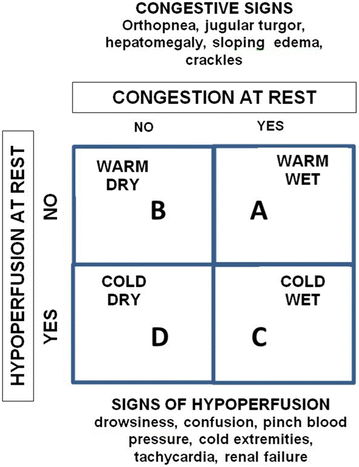Experts' recommendations for the management of cardiogenic shock in children
- PMID: 26879087
- PMCID: PMC4754230
- DOI: 10.1186/s13613-016-0111-2
Experts' recommendations for the management of cardiogenic shock in children
Abstract
Cardiogenic shock which corresponds to an acute state of circulatory failure due to impairment of myocardial contractility is a very rare disease in children, even more than in adults. To date, no international recommendations regarding its management in critically ill children are available. An experts' recommendations in adult population have recently been made (Levy et al. Ann Intensive Care 5(1):52, 2015; Levy et al. Ann Intensive Care 5(1):26, 2015). We present herein recommendations for the management of cardiogenic shock in children, developed with the grading of recommendations' assessment, development, and evaluation system by an expert group of the Groupe Francophone de Réanimation et Urgences Pédiatriques (French Group for Pediatric Intensive Care and Emergencies). The recommendations cover four major fields of application such as: recognition of early signs of shock and the patient pathway, management principles and therapeutic goals, monitoring hemodynamic and biological variables, and circulatory support (indications, techniques, organization, and transfer criteria). Major principle care for children with cardiogenic shock is primarily based on clinical and echocardiographic assessment. There are few drugs reported as effective in childhood in the medical literature. The use of circulatory support should be facilitated in terms of organization and reflected in the centers that support these children. Children with cardiogenic shock are vulnerable and should be followed regularly by intensivist cardiologists and pediatricians. The experts emphasize the multidisciplinary nature of management of children with cardiogenic shock and the importance of effective communication between emergency medical assistance teams (SAMU), mobile pediatric emergency units (SMUR), pediatric emergency departments, pediatric cardiology and cardiac surgery departments, and pediatric intensive care units.
Figures
References
-
- Singh D, Chopra A, Pooni PA, Bhatia RC. A clinical profile of shock in children in Punjab, India. Indian Pediatr. 2006;43(7):619–623. - PubMed
LinkOut - more resources
Full Text Sources
Other Literature Sources



